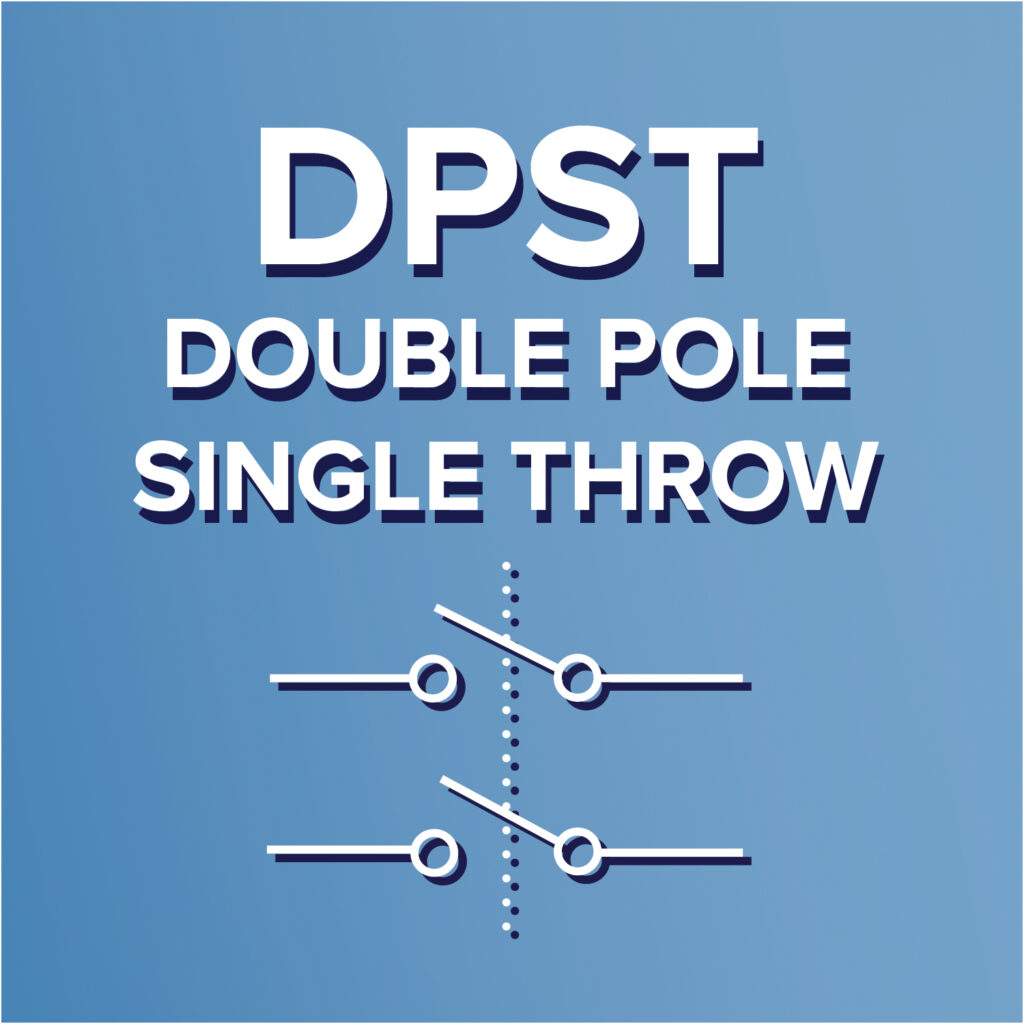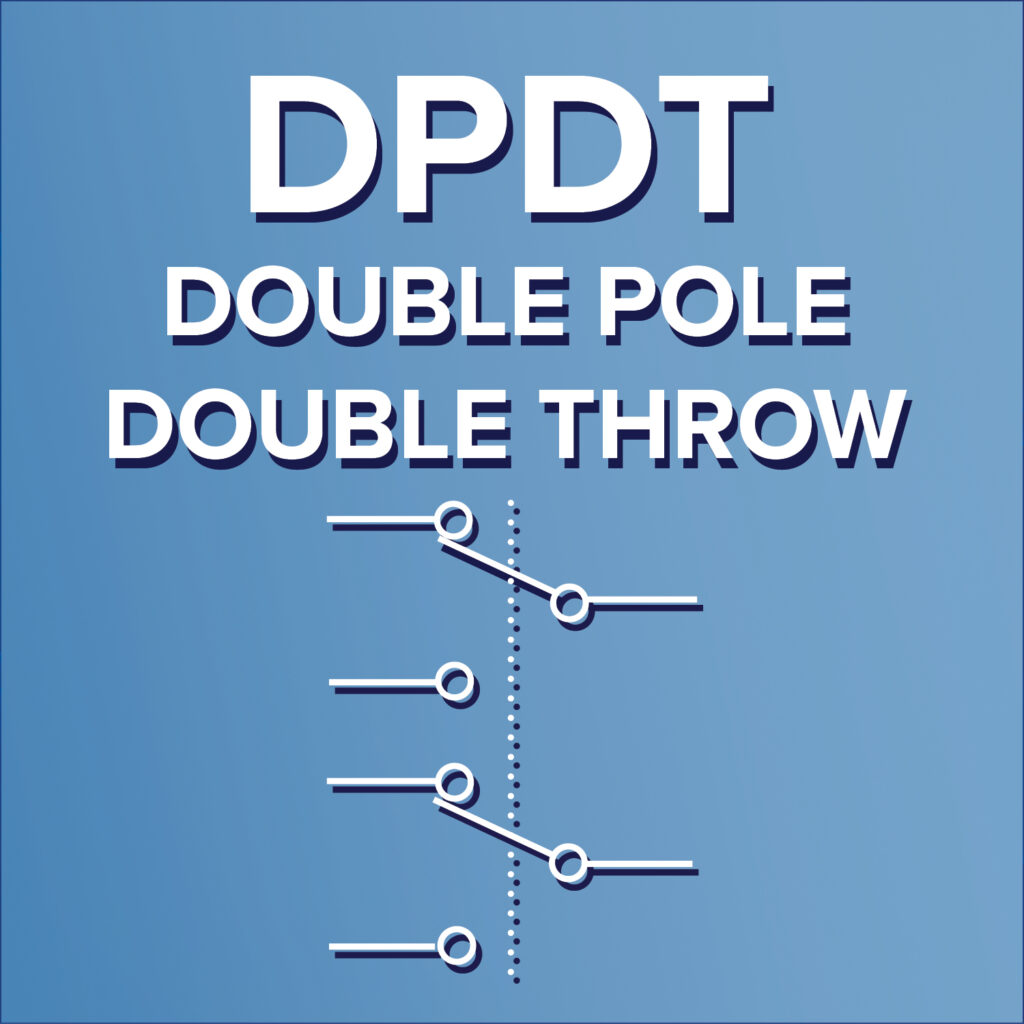What Do “Poles” and “Throws” Actually Mean?
A pole refers to the number of separate inputs on a switch controlled by a single actuator. A throw refers to how many different outputs each input can connect to.
For example:
- A Single Pole Single Throw (SPST) switch has one input and one output. It either connects or stays open, like a simple ON and OFF function.
- A Single Pole Double Throw (SPDT) switch has one input and two possible outputs.These outputs are normally referred to as Normally Open (NO) and Normally Closed(NC). When the switch is toggled, the connection shifts from one output to the other.
As you move from single to double pole, the number of circuits a switch can control increases. As you move from single to double throw, each circuit gains more path options. Inside the switch, the contact sets simply open or close based on the configuration.

SPST: The Simple ON and OFF Switch
SPST stands for Single Pole Single Throw. This type of switch controls one circuit and provides one output connection, it completes or opens the circuit, depending on the position.
In practice, SPST switches are rarely used in our products. There is no real cost advantage, and the design is limited to just one wiring behavior. SPDT switches are often preferred because they allow the user to wire for either normally open or normally closed. That level of flexibility supports a wider range of applications without needing different part numbers.
SPDT: When You Need to Switch Between Two Paths
SPDT stands for Single Pole Double Throw. This configuration gives you two output terminals and lets you choose how to wire them.
One output is normally open, and the other is normally closed. Depending on your system, you can wire the switch for either function. SPST switches only support one of those, so you would need a different part for each version. SPDT simplifies that by giving you both options in one switch and reduces the chance of ordering the wrong version.


DPST: Controlling Two Circuits at Once
DPST stands for Double Pole Single Throw. It lets you control two circuits at the same time using one switch movement.
This setup is similar to using two SPST switches with a shared actuator, but there is no real benefit to doing that. These components are already cost effective, and it usually makes more sense to use a switch with more flexibility. In many cases, a DPDT switch is used instead to support a wider range of configurations with just one part.
DPDT: Switching Two Circuits in Two Directions
DPDT stands for Double Pole Double Throw. It operates like two SPDT switches that toggle together. Each pole has two output paths, and both circuits can be wired as either normally open or normally closed.
This is useful when your system needs more flexibility or when redundancy is a factor. In some applications, having two poles helps reduce the risk of failure by allowing the switch to operate as a backup system if needed.
Design-wise, DPST and DPDT are similar, but DPDT offers more wiring options without needing a different switch body.

Common Mistakes and How to Avoid Them
SPST is not something we offer, so there is no confusion when choosing between SPST and SPDT. SPDT already provides both wiring options in one switch, which simplifies selection and covers more applications with fewer part numbers.
If you are not sure which switch type to choose, start by answering three key questions:
- How many circuits need to be controlled
- Does the system require any redundancy for safety
- Should the signal be normally open or normally closed
Once you know those three things, the right configuration becomes a lot clearer. And if you need a visual, the switch diagram in our catalog lays it out clearly.
Conclusion
All of these switch types are based on the same two ideas. Poles define how many circuits controlled by a single actuator. Throws define how many outputs each circuit can connect to.
SPST gives you one circuit with one output. SPDT adds flexibility by letting you choose how the circuit behaves. DPST control two circuits with a single switch action. DPDT expands on that by giving you two poles and two throws, so you can wire both circuits however you need.
Understanding these terms makes it easier to match the switch to the job and avoid confusion during design or ordering.
Need more help choosing the right switch? Visit our Learning Center for more technical breakdowns like this one.
Date Uploaded 09/10/25
In collaboration with Christian Smutnick (Applications Engineer)
Custom Footswitches
Linemaster’s custom footswitches are designed to meet specific user requirements, offering a range of features such as various pedal configurations, wired and wireless options, and customizable LED indicators. These custom footswitches provide reliable, durable solutions tailored to enhance functionality in diverse applications.


